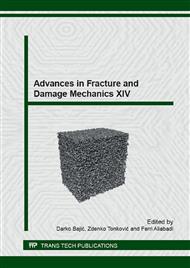p.9
p.13
p.17
p.21
p.25
p.29
p.33
p.37
p.41
Rheological Study of the Performance and the Vulnerability of an Element of RC Structure during and after a Seismic Signal
Abstract:
If the dimensioning methods of new structures are well controlled, the forecast of the seismic levels for which an existing building resists is a problem much more difficult to define. Their behavior and their comportment are completely unknown. The modeling of deteriorating hysteretic behavior is becoming increasingly important. With numerical integration procedures and the spectacular progress of computers, it is possible to predict the nonlinear behavior of reinforced concrete structures by using material rheological models during and after an earthquake. The objective of this research work is to develop a rheological model which allows digital nonlinear simulations (material) of structural systems excited by cyclic loads taken from seismic sources such as they are presented in reality, meaning in the form of digitalized accelerogram. This procedure requires a calibration dictated by particular transformations for the case of RC structures under this type of excitation in all points of the system and at every moment during the lasting of the signal. Besides, macrofibers models offer a satisfactory approach for analyzing all RC structures by taking into account various generated phenomena.
Info:
Periodical:
Pages:
25-28
Citation:
Online since:
September 2015
Authors:
Price:
Сopyright:
© 2016 Trans Tech Publications Ltd. All Rights Reserved
Share:
Citation:


